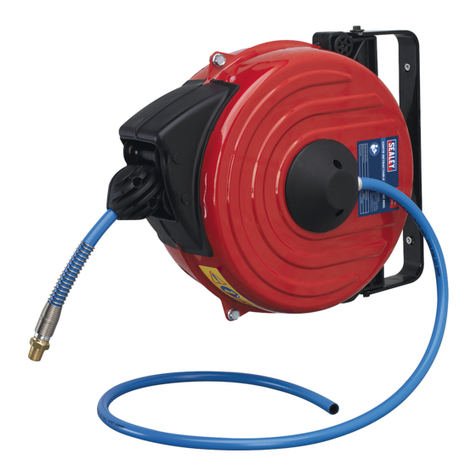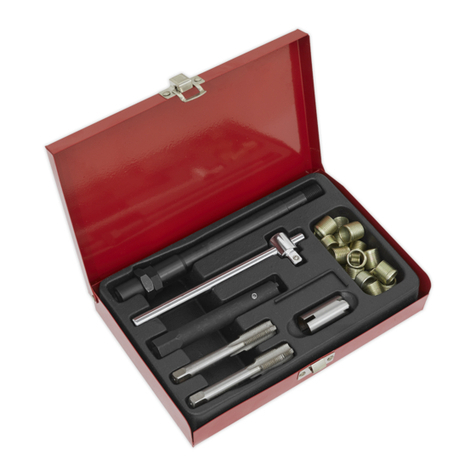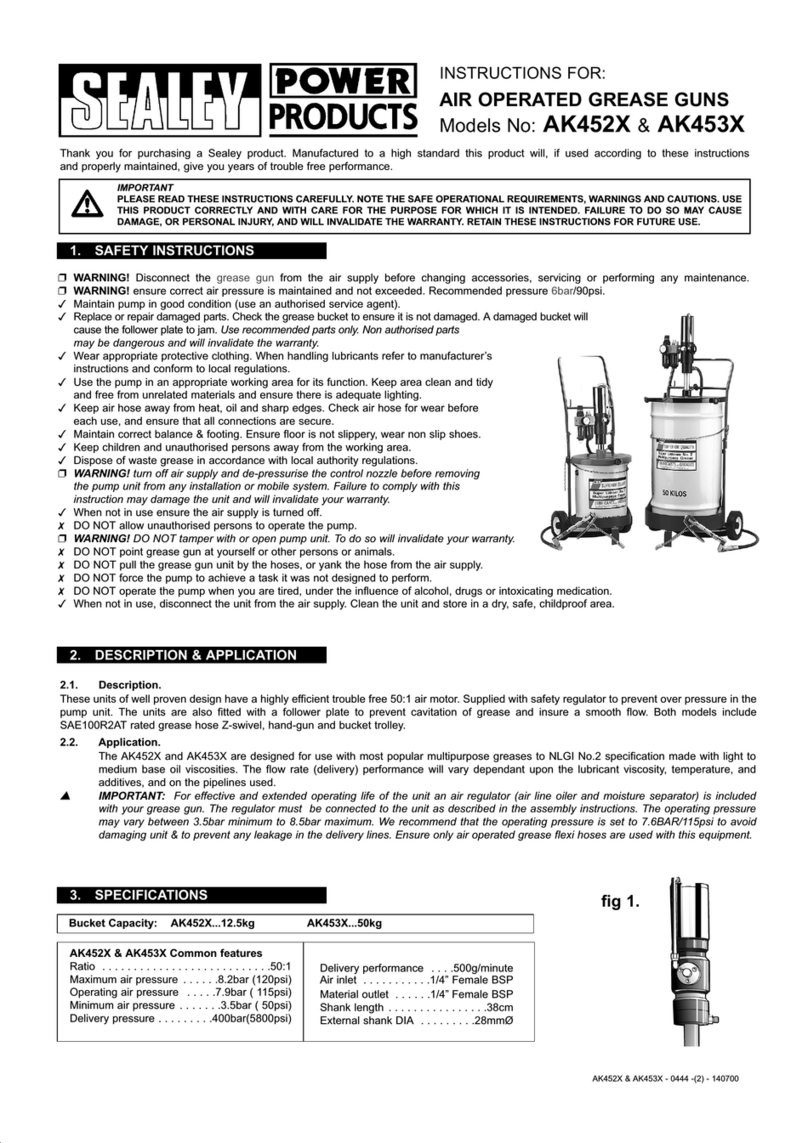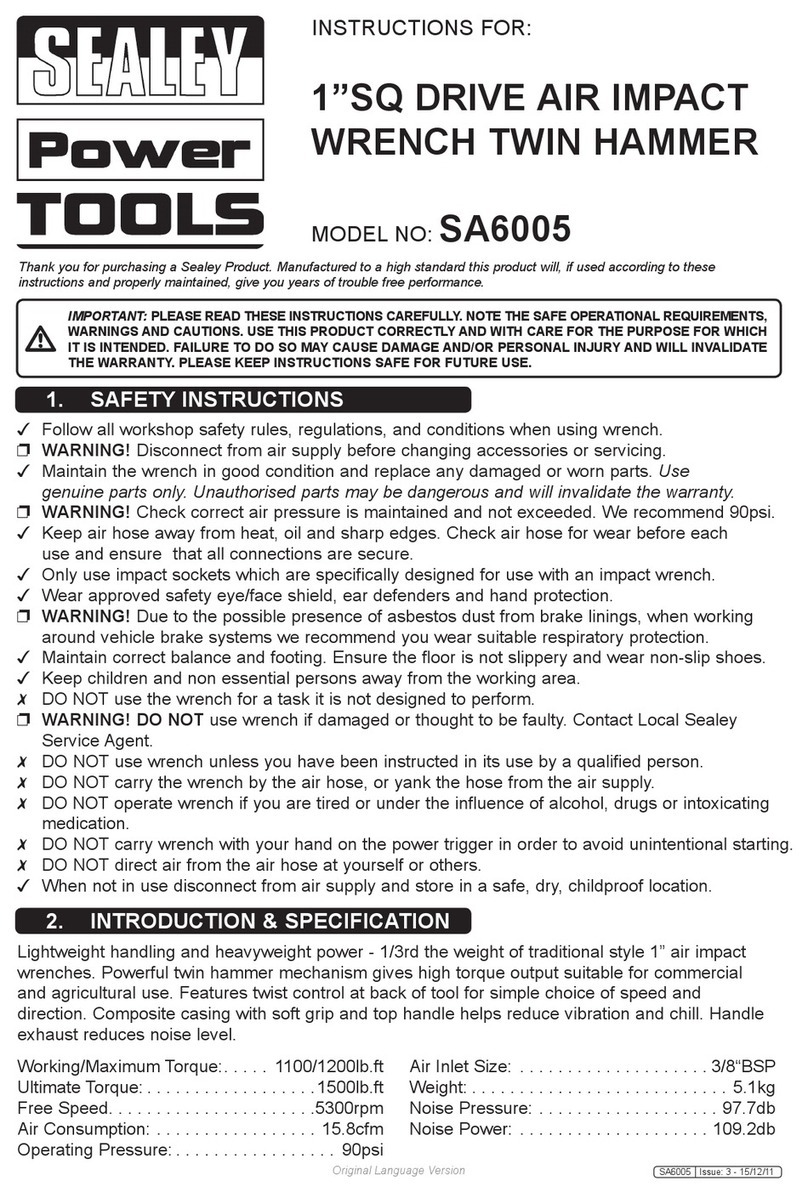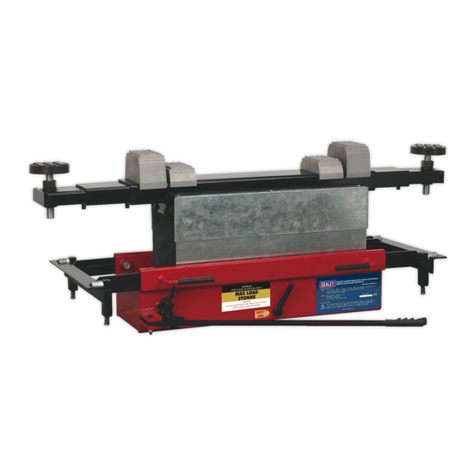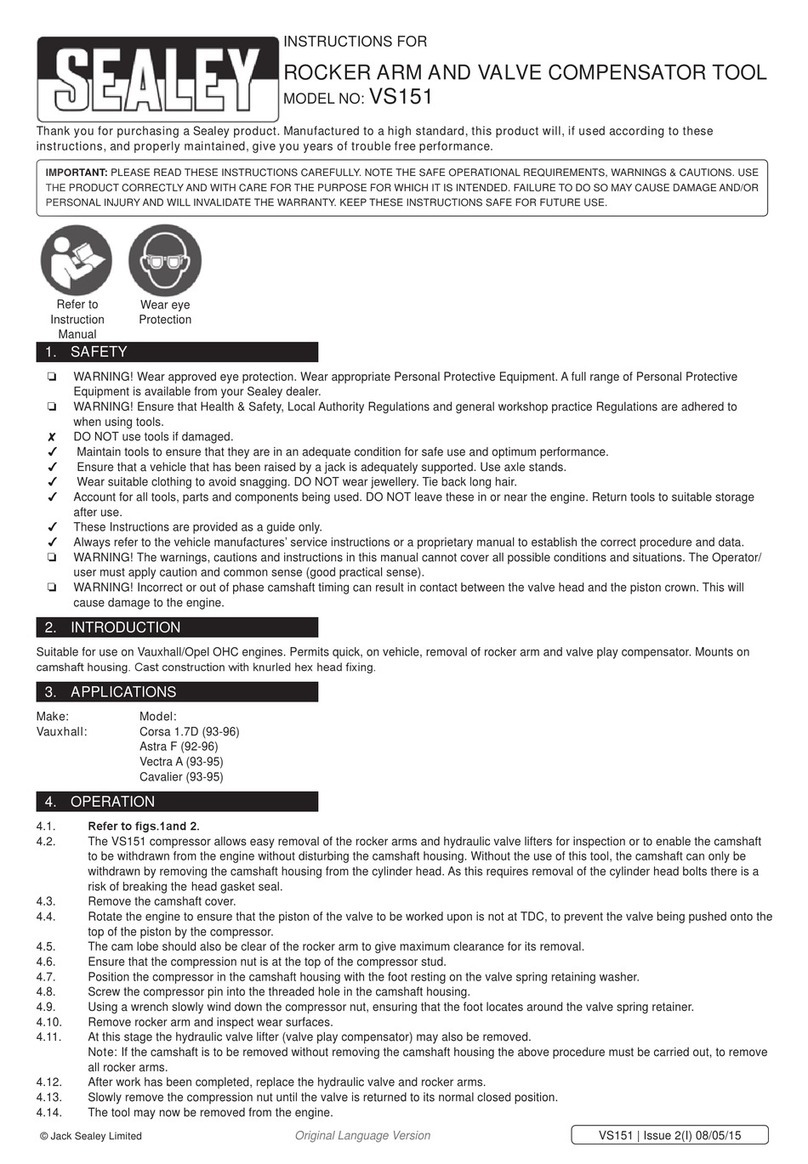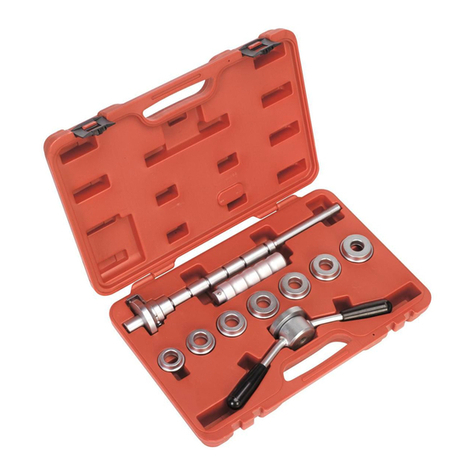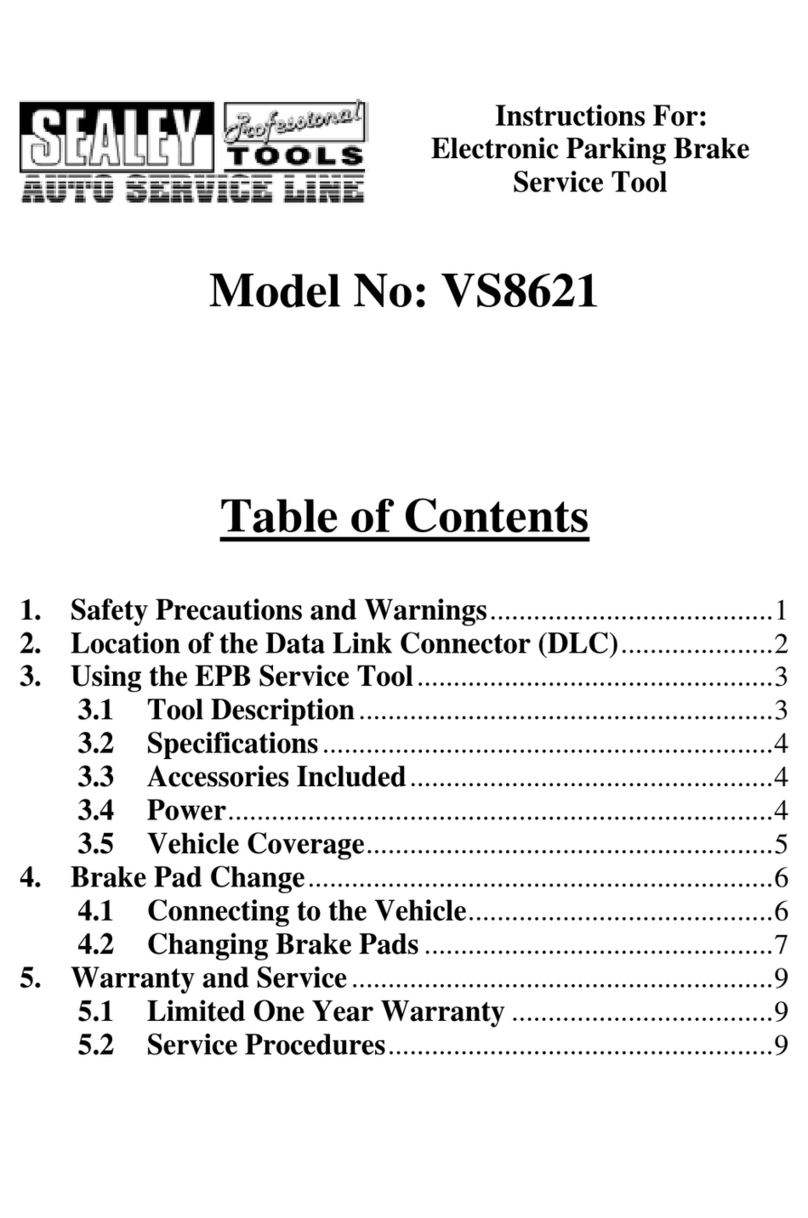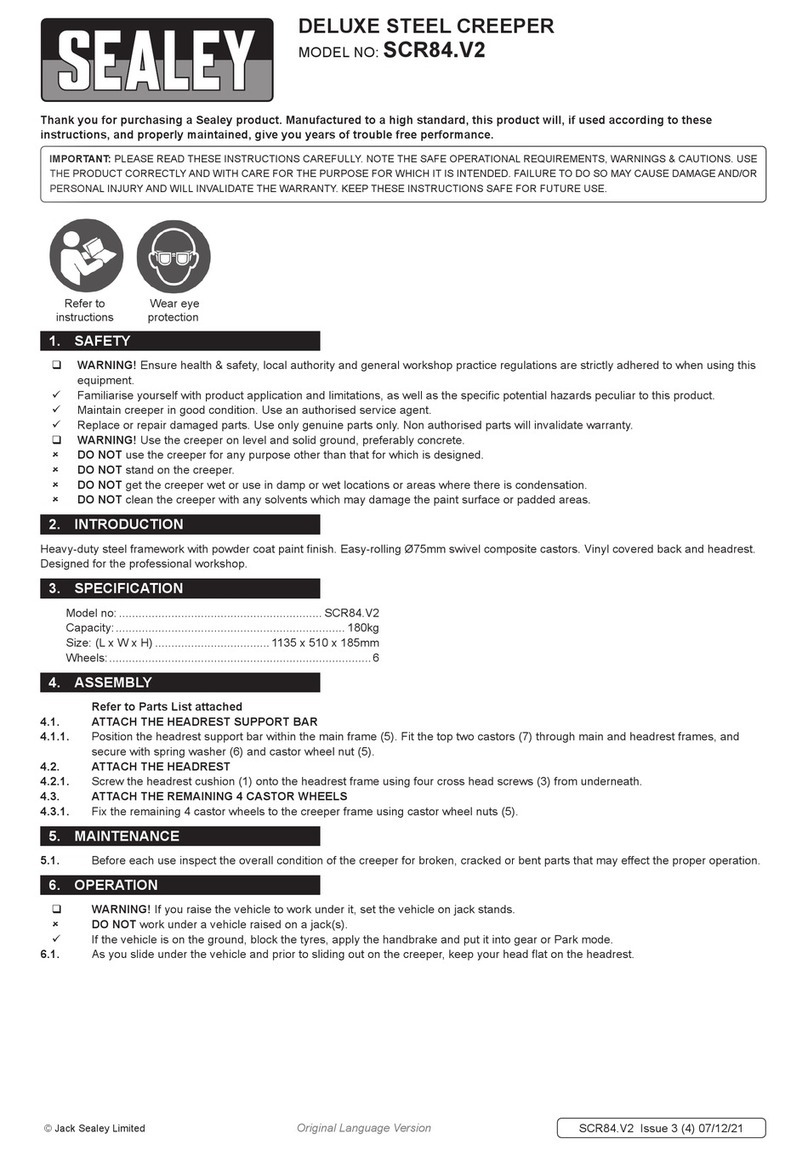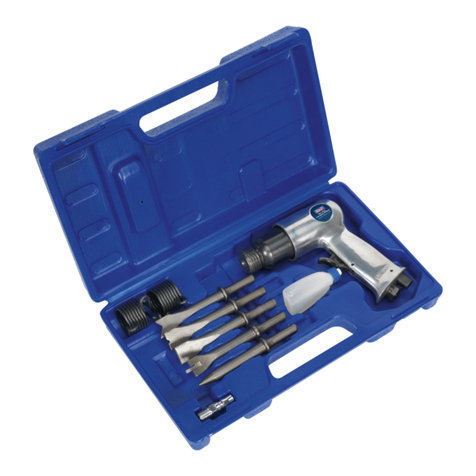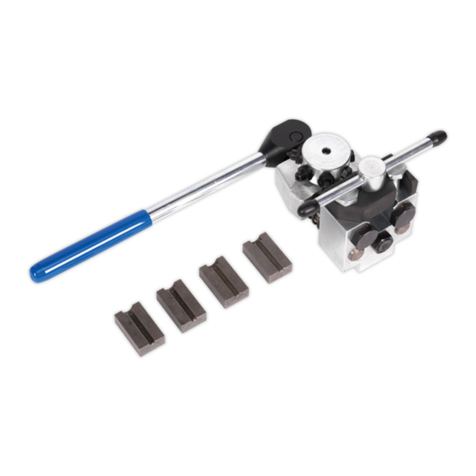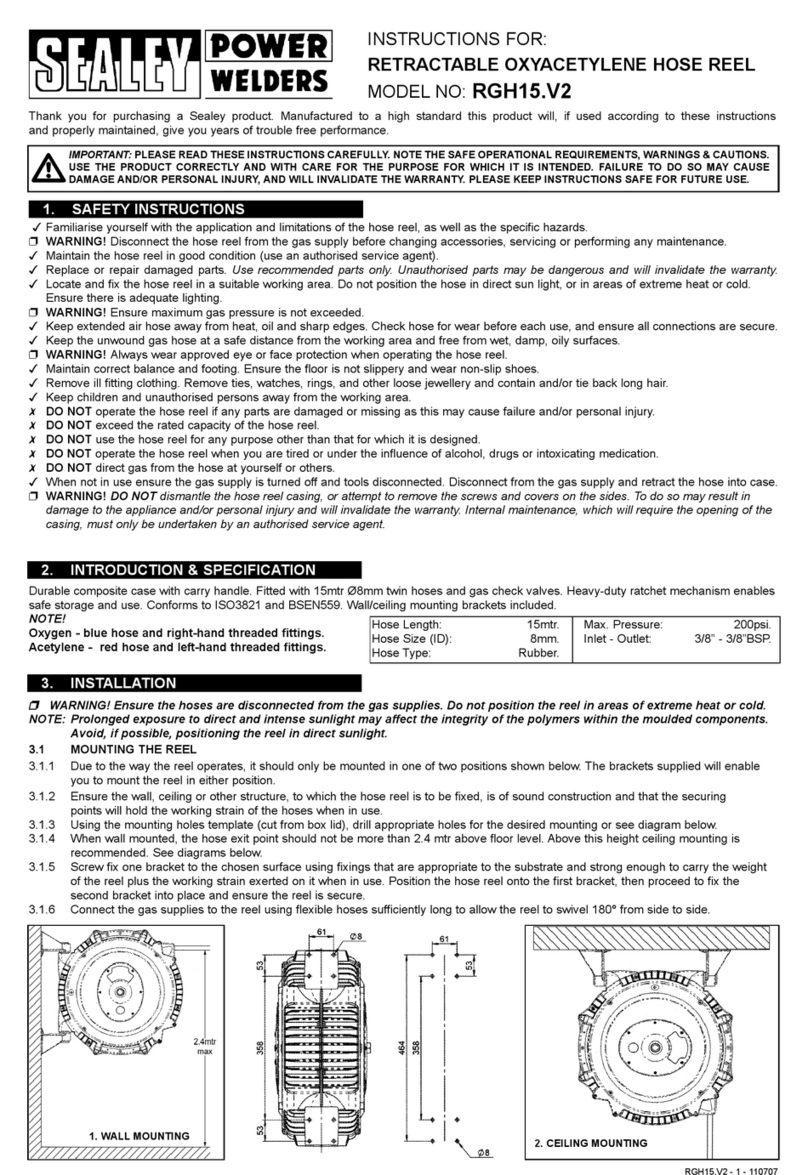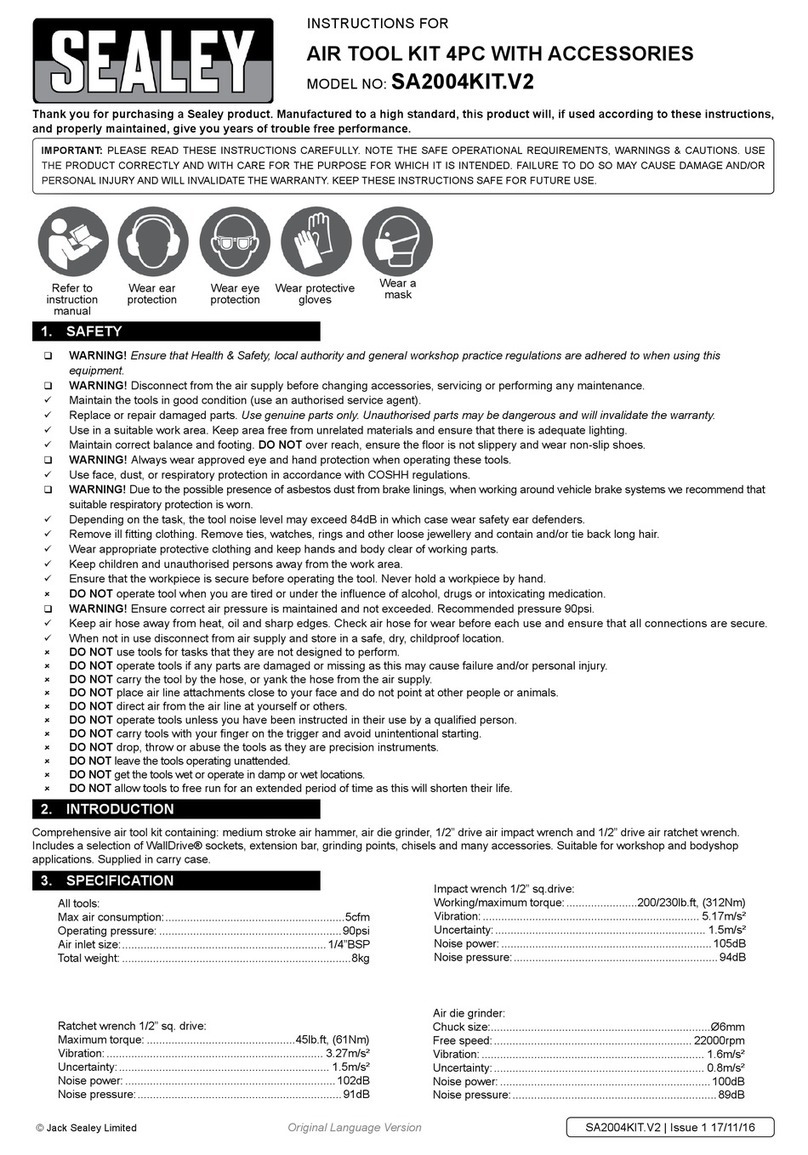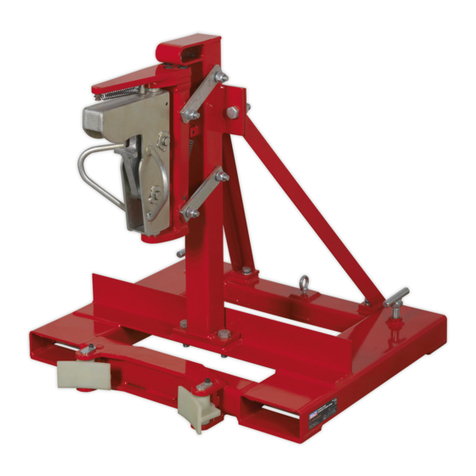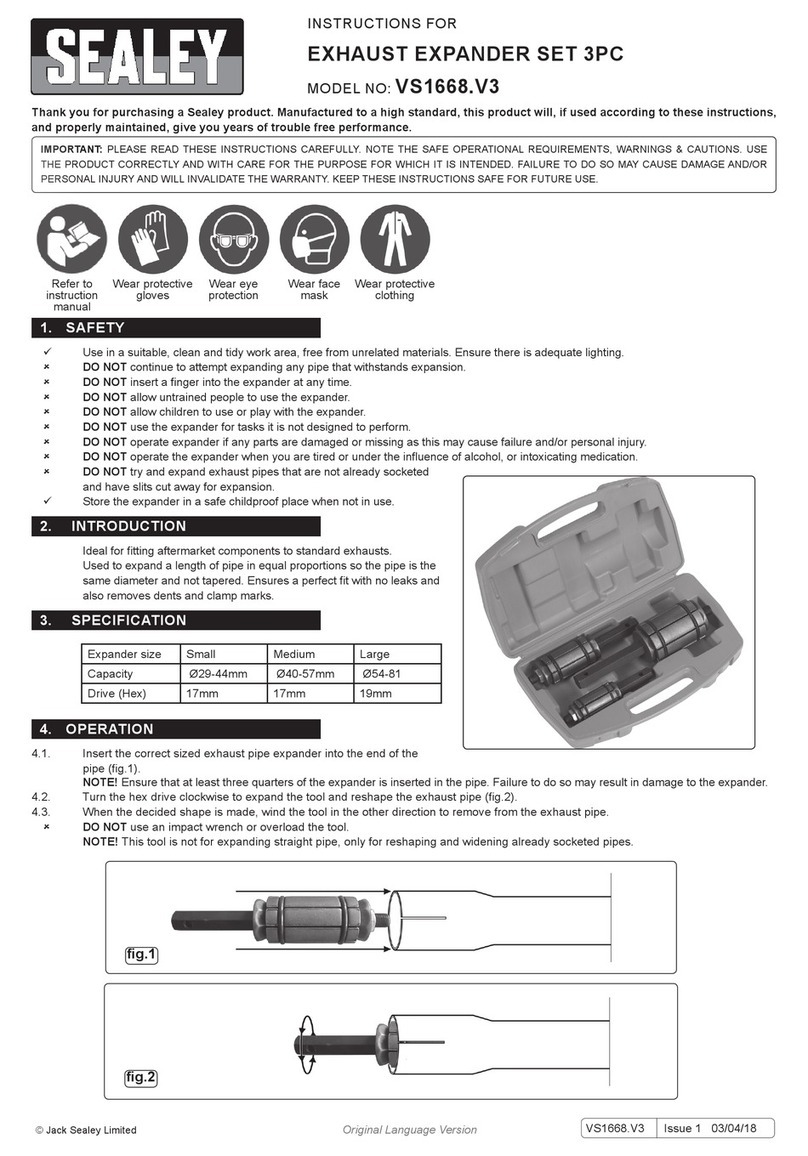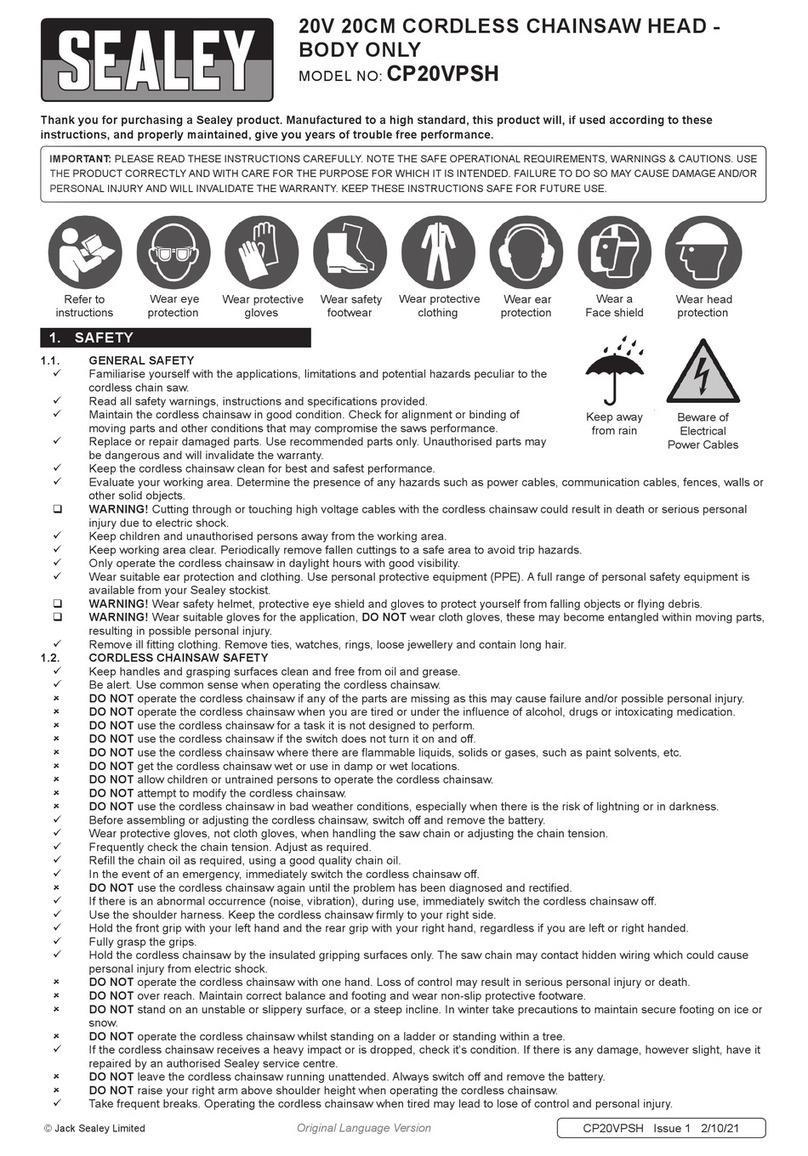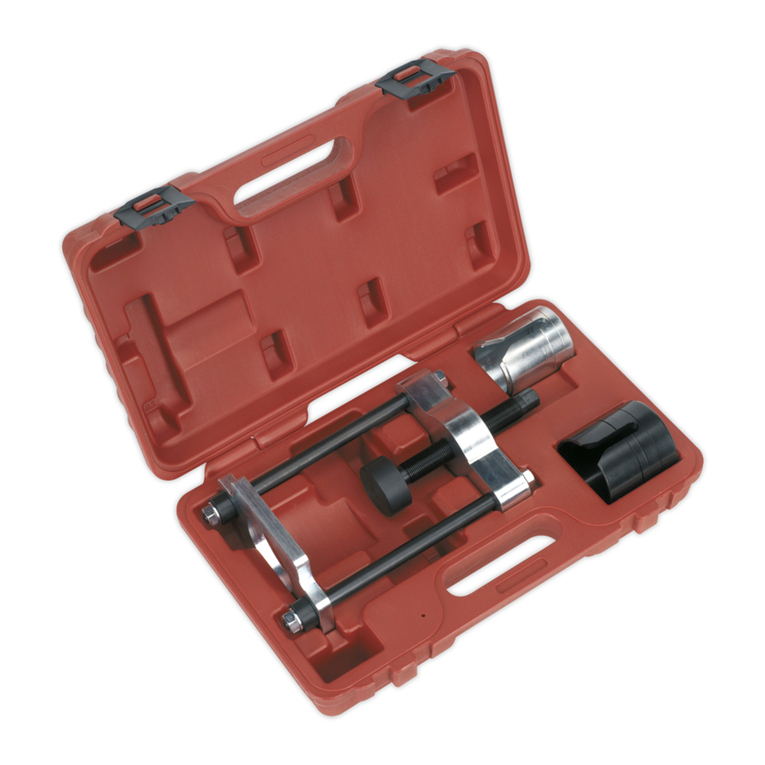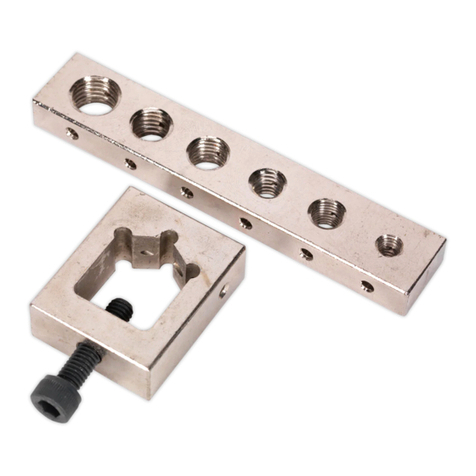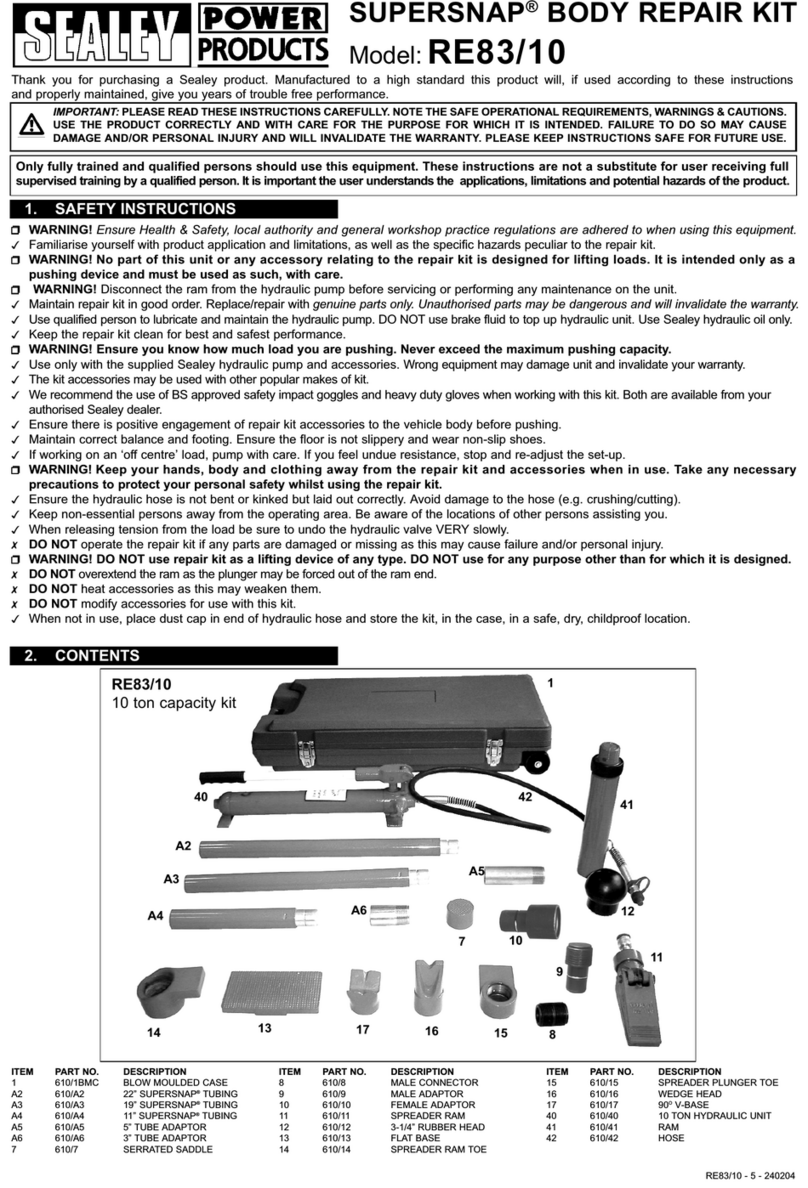
1.2. GENERAL SAFETY.
WARNING! Ensure Health and Safety, local authority and general workshop practice regulations are adhered to when using this unit.
sIMPORTANT: If possible, refer to the vehicle manufacturer’s serviceinstructions to establish the correct procedure.
Maintain this product in good working order and condition, take immediate action to repair or replace damaged parts.
Use approved parts only. Unapproved parts may be dangerous and will invalidate the warranty.
WARNING! Brake fluid is hazardous, wear approved eye protection and keep skin contact to a minimum. If brake fluid enters eyes,
rinse immediately with plenty of water and seek medical advice. If swallowed seek medical advice immediately.
WARNING! Only use new brake fluid, used brake fluid or other fluids will contaminate the system and possible brake system failure
may result.
WARNING!Brake fluid is flammable - keep away from sources of ignition, including hot surfaces e.g. exhaust manifold.
WARNING!Brake fluid will damage paintwork and clothing. Any spillages should be flushed with water immediately.
DO NOT use to perform a task for which it is not designed.
DO NOT allow untrained persons to use the unit.
DO NOT use when tired or under the influence of drugs, alcohol or intoxicating medication.
WARNING! DO NOT pollute the environment by allowing uncontrolled discharge of fluids.
Keep children and unauthorised persons away from the work area.
Keep work area clean and tidy and free from unrelated materials.
Ensure the work area has adequate lighting.
Ensure that a vehicle which has been jacked up and had its wheels removed, is adequately supported with axle stands.
1. SAFETY INSTRUCTIONS
INSTRUCTIONS FOR:
HYDRAULIC BRAKE AND
CLUTCH BLEEDING SYSTEM
MODEL NO: VS0206.V2
Thank you for purchasing a Sealey product. Manufactured to a high standard this product will, if used according to these instructions and
properly maintained, give you years of trouble free performance.
IMPORTANT: PLEASE READ THESE INSTRUCTIONS CAREFULLY. NOTE THE SAFE OPERATIONAL REQUIREMENTS,
WARNINGS AND CAUTIONS. USE THIS PRODUCT CORRECTLY, AND WITH CARE FOR THE PURPOSE FOR WHICH IT IS
INTENDED. FAILURE TO DO SO MAY CAUSE DAMAGE AND/OR PERSONAL INJURY AND WILL INVALIDATE THE
WARRANTY.
Original Language Version VS0206.V2 Issue:2(I)- 09/08/13
1.1. ELECTRICAL SAFETY.
WARNING! It is the responsibility of the owner and the operator to read, understand and comply with the following:
You must check all electrical products, before use, to ensure that they are safe. You must inspect power cables, plugs, sockets and any other
connectors for wear or damage. You must ensure that the risk of electric shock is minimised by the installation of appropriate safety devices. A
Residual Current Circuit Breaker (RCCB) should be incorporated in the main distribution board. We also recommend that a Residual Current
Device (RCD) is used. It is particularly important to use an RCD with portable products that are plugged into a supply which is not protected
by an RCCB. If in any doubt consult a qualified electrician. You may obtain a Residual Current Device by contacting your Sealey dealer.
You must also read and understand the following instructions concerning electrical safety.
1.1.1. The Electricity at Work Act 1989 requires that all portable electrical appliances, if used on business premises, are tested by a
qualified electrician, using a Portable Appliance Tester (PAT), at least once a year.
1.1.2. The Health & Safety at Work Act 1974 makes owners of electrical appliances responsible for the safe condition of those
appliances and the safety of the appliance operators. If in any doubt about electrical safety, contact a qualified electrician.
1.1.3. Ensure that the insulation on all cables and on the appliance is safe before connecting it to the power supply.
See 1.1.1. and 1.1.2. and use a Portable Appliance Tester.
1.1.4. Ensure that cables are always protected against short circuit and overload.
1.1.5. Regularly inspect power supply cables and plugs for wear or damage and check all
connections to ensure that none is loose.
1.1.6. Important: Ensure that the voltage marked on the appliance matches the power supply
to be used and that the plug is fitted with the correct fuse - see fuse rating at right.
1.1.7. DO NOT pull or carry the appliance by the power cable.
1.1.8. DO NOT pull the plug from the socket by the cable.
1.1.9. DO NOT use worn or damaged cables, plugs or connectors.
Immediately have any faulty item repaired or replaced by a qualified electrician. When a
BS 1363/A UK 3 pin plug is damaged, cut the cable just above the plug and dispose of
the plug safely.
Fit a new plug according to the following instructions (UK only).
a) Connect the GREEN/YELLOW earth wire to the earth terminal ‘E’.
b) Connect the BROWN live wire to the live terminal ‘L’.
c) Connect the BLUE neutral wire to the neutral terminal ‘N’.
d) After wiring, check that there are no bare wires, that all wires have been correctly
connected, that the cable outer insulation extends beyond the cable restraint and
that the restraint is tight.
Double insulated products, which are always marked with this symbol , are fitted with live (brown) and neutral (blue) wires only. To
rewire, connect the wires as indicated above - DO NOT connect either wire to the earth terminal.
1.1.10. Products which require more than 13 amps are supplied without a plug. In this case you must contact a qualified electrician to ensure
that a suitably rated supply is available. We recommend that you discuss the installation of an industrial round pin plug and socket
with your electrician.
1.1.11. If an extension reel is used it should be fully unwound before connection. A reel with an RCD fitted is preferred since any appliance
plugged into it will be protected. The cable core section is important and should be at least 1.5mm², but to be absolutely sure that the
capacity of the reel is suitable for this product and for others which may be used in the other output sockets, we recommend the use
of 2.5mm² section cable.
RECOMMENDED
FUSE RATING: 3AMP
© Jack Sealey Limited
